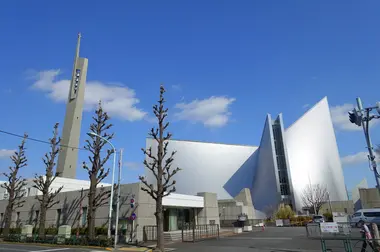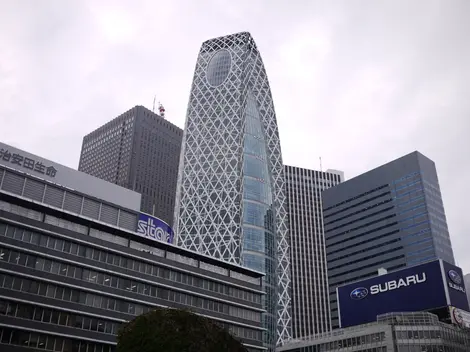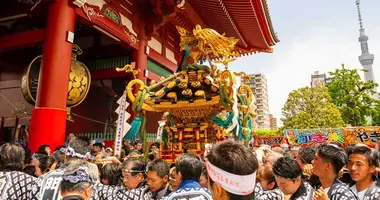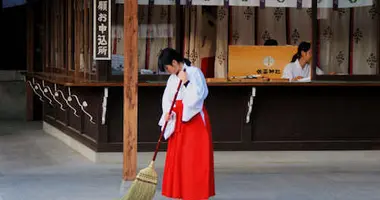Kenzo Tange, der einflussreiche japanische Architekt, der die moderne Architektur geprägt hat
Kenzo Tange (丹下 健三) gilt weithin als einer der einflussreichsten und meist geehrten japanischen Architekten des 20. Jahrhunderts. Der 1913 in Osaka geborene und in der kleinen Stadt Imabari auf der Insel Shikoku aufgewachsene Tange hinterließ in der zweiten Hälfte des 20. Jahrhunderts unauslöschliche Spuren in der Architekturlandschaft Japans und der Welt. Als Lehrer, Schriftsteller, Architekt und Stadtplaner wird Tange nicht nur für seine eigenen bahnbrechenden Werke verehrt, sondern auch für seinen tiefgreifenden Einfluss auf Generationen jüngerer Architekten, die bei ihm studierten oder von seinen visionären Entwürfen inspiriert wurden.
Kenzo Tange (丹下 健三) is widely considered one of the most influential and honored Japanese architects of the 20th century. Born in 1913 in Osaka and raised in the small city of Imabari on Shikoku Island, Tange's career spanned the second half of the 1900s, leaving an indelible mark on the architectural landscape of Japan and the world. As a teacher, writer, architect, and urban planner, Tange is revered not only for his own groundbreaking works but also for his profound influence on generations of younger architects who studied under him or were inspired by his visionary designs. He passed away in 2005 at the age of 91 years old.
Early life and influences
Kenzo Tange's journey into architecture began with a fascination for the works of Swiss modernist Le Corbusier, which he discovered while attending high school in Hiroshima. Inspired to pursue this path, Tange enrolled in the Architecture Department of Tokyo University in 1935. There, he studied under renowned architects Hideto Kishida and Shozo Uchida, further honing his skills and developing his unique approach to design that would later define his career.
After graduating in 1938, Tange worked briefly at the architectural office of Kunio Maekawa, who had previously studied under Le Corbusier in Paris. This experience exposed Tange to the principles of modernist architecture and reinforced his admiration for the pioneering French architect. However, with the outbreak of World War II, Tange returned to Tokyo University to pursue graduate studies, delving into the realms of urban design and the structure of cities.
Major post-war projects that established Tange's reputation
In the aftermath of World War II, Japan faced the monumental task of rebuilding its war-torn cities. Kenzo Tange emerged as a key figure in this reconstruction effort, particularly with his involvement in the Hiroshima Peace Memorial Park project. Winning the design competition in 1949, Tange created a powerful symbol of peace and remembrance that showcased his ability to blend modernist principles with traditional Japanese aesthetics. The park's centerpiece, the Hiroshima Peace Memorial Museum, features a distinctive raised structure supported by massive pillars, framing the view of the atomic bomb dome and creating a poignant memorial to the victims of the bombing.
Tange's success in Hiroshima led to a series of high-profile projects throughout the 1950s, including the Tokyo Metropolitan Government Building (1952), the Kagawa Prefectural Government Office (1958), and the Kurashiki City Hall (1960). These works solidified Tange's reputation as a master of modern architecture, showcasing his innovative use of concrete, steel, and glass to create striking, functional spaces that responded to the needs of post-war Japanese society.
Tange's iconic works of modern architecture in the 1960s
In the late 1950s and early 1960s, Kenzo Tange played a crucial role in the development of the Metabolist movement. It was a group of young Japanese architects and designers who sought to create a new architecture and urbanism that could adapt and evolve in response to the rapid changes of post-war society. Tange served as a mentor and inspiration to many of the movement's key figures, including Kisho Kurokawa, Fumihiko Maki, and Arata Isozaki.
The 1960s marked a pivotal decade in Kenzo Tange's career, as he created some of his most iconic and celebrated works. The Yoyogi National Gymnasium, designed for the 1964 Tokyo Olympics, stunned the world with its sweeping, curving roofs and dynamic, asymmetrical design. Tange's masterful integration of traditional Japanese architectural elements with cutting-edge engineering and materials earned him international acclaim and cemented his status as a leading figure in modern architecture.
Another notable work from this period is St. Mary's Cathedral in Tokyo (1964), a bold, modernist interpretation of the traditional Gothic cathedral. With its striking stainless steel roofs and cruciform layout, the cathedral exemplifies Tange's ability to reinterpret traditional forms through a contemporary lens, creating spaces that are both spiritually uplifting and architecturally innovative.
Tange's influential urban planning visions
Alongside his architectural projects, Kenzo Tange made significant contributions to the field of urban planning. His 1960 doctoral thesis, "Spatial Structure in a Large City," explored the relationship between urban structure and the movement of people within cities. This research laid the groundwork for his visionary "Plan for Tokyo 1960," a radical proposal to reorganize and expand the Japanese capital to accommodate its rapidly growing population.
Tange's plan envisioned a linear city extending across Tokyo Bay, with a series of interconnected modules housing offices, government buildings, and residential areas, all linked by an efficient transportation network. Although never realized, the plan received international attention for its bold, futuristic vision and its innovative approach to addressing the challenges of urban growth and congestion.
The Metabolist movement and Tange's role
In the late 1950s and early 1960s, Kenzo Tange played a crucial role in the development of the Metabolist movement, a group of young Japanese architects and designers who sought to create a new architecture and urbanism that could adapt and evolve in response to the rapid changes of post-war society. Tange served as a mentor and inspiration to many of the movement's key figures, including Kisho Kurokawa, Fumihiko Maki, and Arata Isozaki.
The Metabolists drew on biological concepts of growth and regeneration, envisioning cities as dynamic, living organisms that could grow and change over time. Tange's own work, such as the Tokyo Dome Hotel and the Yamanashi Broadcasting and Press Center, embodies many of these ideas, with their modular, expandable structures and emphasis on flexibility and adaptability.
Tange's international projects and recognition
As Kenzo Tange's reputation grew, so did the scope of his projects. Throughout the 1960s and 1970s, he designed buildings in countries around the world, including embassies, universities, and cultural centers in places like Saudi Arabia, Kuwait, Singapore, Italy, and the United States. His international work showcased his ability to adapt his modernist principles to diverse cultural contexts while maintaining his distinctive style and vision.
Tange's contributions to architecture were widely recognized, and he received numerous prestigious awards throughout his career. In 1987, he became the first Japanese architect to be awarded the Pritzker Architecture Prize, often referred to as the “Nobel Prize of architecture.” The jury citation praised Tange's work for its “great and lasting influence,” noting that his designs " have been searching out ways to combine the best of traditional Japanese architecture with the best of modern Western architecture and evolving a kind of modern monumentality in concrete and glass.”
























